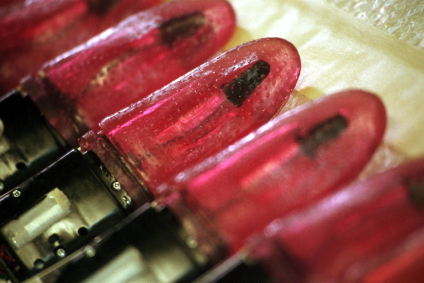My Favorite Story About the History of the Vibrator Isn’t True
September 17, 2018 by Justin Lehmiller

About a decade ago, I came across a book titled The Technology of Orgasm by Rachel Maines. It quickly became one of my favorites on the history of sex because it presented a fascinating and scandalous story behind how the vibrator came to be such a popular device—a story that appeared to be grounded in rigorous academic research. It turns out that there’s a major problem with this story, though: it’s not true.
In a nutshell, Maines argued in her book that vibrators were once used as therapeutic devices by physicians on female patients who had been diagnosed with hysteria, a medical condition that has long since been debunked. She claimed that “pelvic massage” culminating in “hysterical paroxysm” (or, as you and I know it, orgasm) was a “staple of medical practice” in the Victorian era. She further argued that doctors started using vibrators to perform this task because it was a more efficient way of stimulating women than doing it by hand—in other words, vibrators allowed physicians to cut down on the length of office visits and to see more patients each day.
Maines suggested that doctors didn’t view this practice as sexual in nature because no vaginal penetration was involved—they supposedly only used vibrators for clitoral stimulation. It was only by viewing the act as non-sexual that it came to be a standard of medical care, as the reasoning goes.
However, in a paper published in the Journal of Positive Sexuality, Hallie Lieberman and Eric Schatzberg performed an extensive review of the sources Maines cited for her book and came to a drastically different conclusion, which is as follows: “We found no evidence in these sources that physicians ever used electromechanical vibrators to induce orgasms in female patients as a medical treatment.”
That’s a pretty damning assessment of the claims made in The Technology of Orgasm.
Lieberman and Schatzberg say there is no support for the idea that genital massage with vibrators was ever a “staple of medical practice.” Moreover, with respect to the claim that doctors used vibrators to make genital massage to orgasm more efficient, they say “there is not one shred of evidence that this practice ever occurred.” They also say that, to the extent that this did occur, it wouldn’t have been viewed as non-sexual, either.
Their analysis reveals that a lot of the sources that Maines cited as support for her claims were likely either misread or misrepresented—they just don’t seem to back up what’s in the book.
Lieberman and Schatzberg conclude that this is a cautionary tale about how easily falsehoods can become embedded in academic writings and popular culture. After all, since her book was published in 2001, Maines’ claims have been repeated by numerous academics (myself included) and they even became the basis of a 2011 Hollywood movie, Hysteria.
This situation, coupled with the ongoing replication crisis in science, is an important reminder to all of us to maintain a healthy dose of skepticism and to place more value on replication and verification of surprising findings and claims.
Want to learn more about Sex and Psychology ? Click here for previous articles or follow the blog on Facebook (facebook.com/psychologyofsex), Twitter (@JustinLehmiller), or Reddit (reddit.com/r/psychologyofsex) to receive updates.
To learn more about this subject, see: Lieberman, H., & Schatzberg, E. (2018). A failure of academic quality control: The Technology of Orgasm. Journal of Positive Sexuality.
Image Source: iStockphoto
You Might Also Like:

Dr. Justin Lehmiller
Founder & Owner of Sex and PsychologyDr. Justin Lehmiller is a social psychologist and Research Fellow at The Kinsey Institute. He runs the Sex and Psychology blog and podcast and is author of the popular book Tell Me What You Want. Dr. Lehmiller is an award-winning educator, and a prolific researcher who has published more than 50 academic works.
Read full bio >

